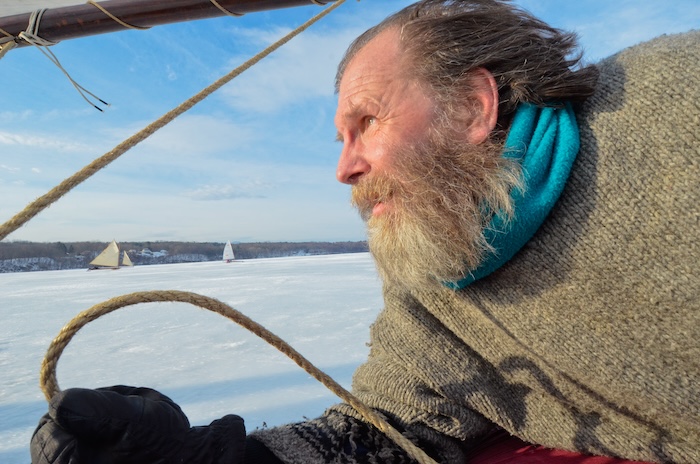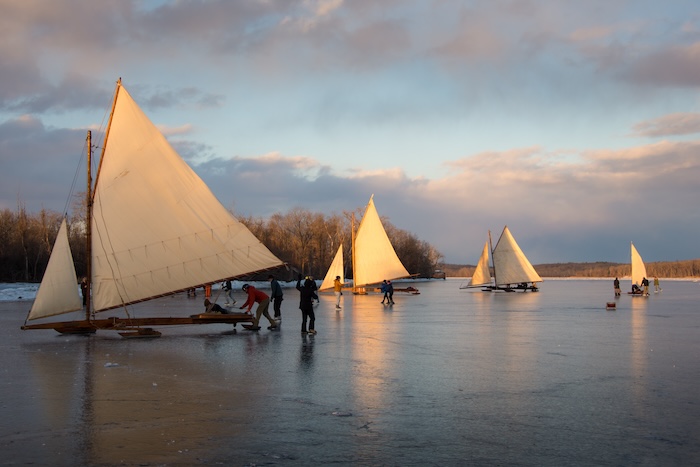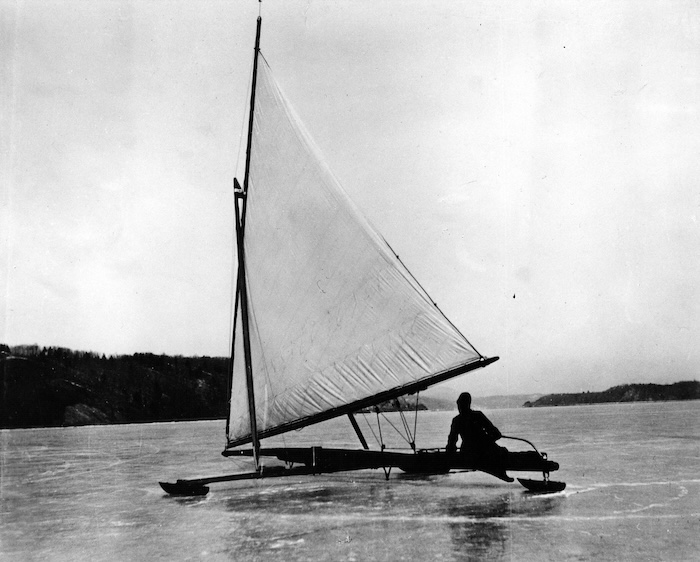Mild winters spell trouble for iceboating
John Sperr, 75, doesn’t need scientific reports to understand how climate change has affected iceboating on the Hudson River.
“This year we’ve gone out seven or eight times,” says Sperr. In the “good years” — three to four decades ago — he would sail 35 to 40 times per winter. “I could depend on the pond in my backyard freezing by Dec. 9, but as time went on that was no longer true. We rarely get a good season of ice.”
The Rhinebeck resident began iceboating in 1982, “a particularly spectacular year on the Hudson,” he recalls. “We could sail on 26 miles of ice from Hyde Park to Germantown,” in Columbia County.

When the ice is good, the experience is amazing, he says. “You have to be smart, making your own decisions about how to get from point A to B. You have the wind in your hair, you hear the clickety-clack as you move along, you’re having a good time with friends, enjoying the beauty of the river.”
There has been good ice this season near Athens, in Greene County, in the western channel around a small island off the City of Hudson, across the river. The U.S. Coast Guard breaks the ice in the eastern channel.
The mile-wide Orange Lake, northwest of Newburgh, is another popular site. It freezes more consistently than the Hudson, Sperr says. Tivoli Bay in Dutchess County was an iceboating center, although not in recent years.
Iceboats date to the 17th century in the Netherlands and the Gulf of Riga between Latvia and Estonia, where they transported goods before becoming popular as pleasure craft that Europeans dubbed “ice yachts.” In the 18th century, Dutch settlers along the Hudson added runners to their boats, enabling winter transport of goods and people over the ice. In 1790, Oliver Booth of Poughkeepsie added runners to a wooden box and a rudder to create what many consider the prototype for recreational ice boats.

The Poughkeepsie Ice Yacht Club, founded in 1861, was the first of its kind in the U.S. Within five years, a local newspaper reported there were more than 100 ice yachts on the Hudson, with clubs from Newburgh to Albany. In 1885, after a dispute, members of the Poughkeepsie group left to form the Hudson River Ice Yacht Club. Its first commodore was John Roosevelt, an uncle of future President Franklin D. Roosevelt.
John Roosevelt and his Hyde Park neighbor, Archibald Rogers, were among the nation’s best iceboat builders and captains. Two of their boats, Icicle and Jack Frost, won the sport’s most prestigious competition, the Ice Yacht Challenge Pennant of America, nine times between them after The Phantom, sailing out of the New Hamburg Ice Yacht Club, took home the 30-foot silk banner in the inaugural race in 1881.
The years 1880 to 1910 are considered the golden age of Hudson River iceboating. During that era, even in a moderate breeze, iceboats sped along at speeds of 70 mph, outracing trains on the riverfront tracks. For a brief period, iceboats were the fastest vehicles in the world. By 1908 the Hudson River Ice Yacht Club had 52 yachts, including The Hawk, owned by the club’s vice commodore, FDR.

The wooden boats gave way in the 1920s to streamlined craft developed in the Midwest around the Great Lakes. In the early 1960s, the club enjoyed a resurgence led by Ray Ruge, a Cornwall resident who rescued old boats. Today, the club has about 30 yachts, including Spider (Sperr’s 26-footer) and the Jack Frost, which has 800 feet of sail. Its body has been rebuilt but the cockpit is original. (Its companion, Icicle, is owned by the Hudson River Maritime Museum in Kingston.)
During one outing on the Jack Frost, on the river in Columbia County, “the wind came up suddenly and threw the two guys out of the cockpit” onto the ice, Sperr says. The men scrambled back aboard and yelled to Sperr and others in nearby boats to join them; they needed more weight.
“Four of us jumped on,” he says. They turned the boat downwind, “accelerated through a broad reach, the runner plank went up in the air and, all of a sudden, we were going 80 mph.”
The Hudson River Ice Yacht Club (hriyc.org), which today has about 50 members, races other clubs when conditions permit, and has “a keen rivalry” with the North Shrewsbury Ice Boat and Yacht Club, from Red Bank, New Jersey, Sperr says. But climate change has made it a challenge to recruit members.
“The reward is learning to sail, in the sailing and being out on the ice,” he says. “But it’s hard to get young people interested when you can’t sail very often.”

